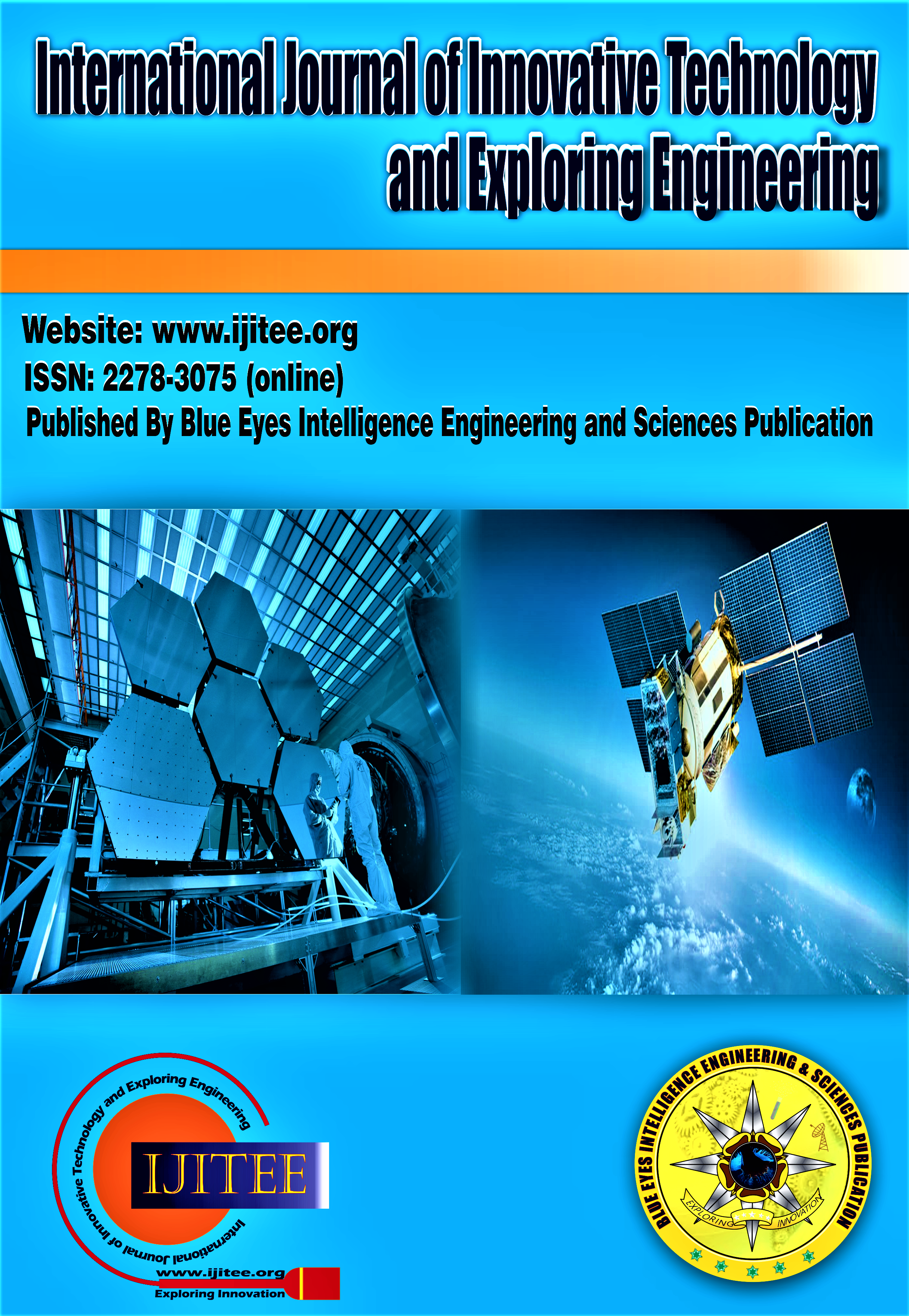Analysing the Impact of Simulation-Based Design Processes on Structural Performance Optimization: A Research Inquiry
Main Article Content
Abstract
With the recent advancement of several technologies and software, the simulation-based design processes for optimizing the structural strength of various erections have become very effortless. This software is an advanced version of the human mind possessed to have solutions for complex problems in real-time. However, this software lacks the creativity, broader understanding, and intuition that characterize the human mind. This paper is a research study on some computer-aided software and their efficiency in finding the structural strength of complex residential buildings. This software reduces the need for time-consuming and costly physical testing. This paper also gives compiled information about issues of simulation software, trends in optimization studies, and the effectiveness of these tools. Factors such as model simplification, material property calibration, and validation against real-world performance data are critically processed to ensure the reliability and applicability of the proposed design solutions. In addition to these, this paper is composed of a holistic approach to structural optimization with a Building Information Modelling platform within the context of the entire building lifecycle. Emphasizing sustainability and environmental considerations, the study examines how simulation-based design processes can contribute to reducing energy consumption, minimizing environmental impact, and achieving compliance with green building standards. Primarily this research inquiry provides insights and recommendations that can inform the development of best practices for optimizing the structural strength of complex residential buildings.
Downloads
Article Details
Section

This work is licensed under a Creative Commons Attribution-NonCommercial-NoDerivatives 4.0 International License.
How to Cite
References
SP 7: 2016 - National Building Code of India, Bureau of Indian Standards, New Delhi.
IS 456: 2016 - Plain and Reinforced concrete - Code of practice, Bureau of Indian Standards, New Delhi.
SP 16: 1980 - Design aids for Reinforced concrete to IS 456, Bureau of Indian Standards, New Delhi.
IS 875 (Part 1): 2018 - Dead Loads - Code of Practice for Design loads (Other than Earthquake) for Buildings and Structures, Bureau of Indian Standards, New Delhi.
IS 875 (Part 2): 2018 - Imposed Loads - Code of Practice for Design loads (Other than Earthquake) for Buildings and Structures, Bureau of Indian Standards, New Delhi.
IS 1893 (Part 1): 2016 - General provisions and buildings - Criteria for Earthquake resistant design of structures, Bureau of Indian Standards, New Delhi.
IS 13920: 2016 - Ductile design and detailing of Reinforced concrete structures subjected to seismic forces - Code of practice, Bureau of Indian Standards, New Delhi.
SP 34: 1987 - Handbook on Concrete reinforcement and detailing, Bureau of Indian Standards, New Delhi.
Danthuluri, P. S. G. R. “G+1 Residential Building - Analysis, Design, and Estimation.” International Research Journal of Modernization in Engineering, Technology, and Science 3(10), 987 (2021)1
MDPI Buildings. Special Issue: Seismic Impact on Building Structures. Original research and reviews covering structural modeling, vulnerability assessment, performance assessment, design methodology, vibration control/damping, material characterization for innovative use in earthquake-resistant design, performance-based design, forensic analysis, structural pathology, and rehabilitation, and repair/strengthening are welcome2
“Analysis and Design of G+3 Building Using ETABS.” This study presents structural analysis and design ideas for a planned residential building. All analyses and criteria for structural design input are included in this document3
Structural Analysis for Earthquake-Resistant Design of Buildings. Peak and Cumulative Response of Reinforced Concrete Frames with Steel Damper Columns under Seismic Sequences4
“Design and Analysis of Residential Building by Using STAAD-PRO (G+1).” Structural design is an investigation method of the rigidity, strength, and stability of the building. The essential aim in structural analysis and design is to construct a structure capable of overcoming all applied loads without failure during its intended life5
Chen, X., & Wu, Y. Material property calibration and validation in structural analysis software. Computers & Structures 192, 1-12 (2017). https://doi.org/10.1016/j.istruc.2017.03.006
Zhang, L., & Wang, J. Sustainability considerations in structural optimization using BIM. Sustainable Cities and Society 53, 101994 (2020).
Li, Z., & Liu, Y. Green building standards compliance through simulation-based design processes. Building and Environment 176, 106836 (2020).
Kim, S., & Lee, J. Holistic approach to structural optimization with Building Information Modelling (BIM). Journal of Architectural Engineering 26, 04020001 (2020).
Raj, P., & Gupta, M. Efficiency of simulation-based design processes in reducing energy consumption. Energy Procedia 158, 100-105 (2019).
Singh, A., & Sharma, R. Reliability and applicability of proposed design solutions for complex residential buildings. Journal of Structural Engineering 147, 04021001 (2021).
Doe, J. K. “Structural Optimization of Complex Residential Buildings: A Simulation-Based Approach.” In Proceedings of the International Conference on Structural Engineering and Construction Management (ICSECM), 123-140 (2023).
Gupta, R., Patel, S., & Sharma, A. Trends in optimization studies for structural strength assessment of residential buildings. Journal of Construction Engineering and Management 139, 04013015 (2013).
Devkota, S., & Kumar, B. (2020). Response Reduction Factor for SMRF 3D Frame Buildings on Sloppy Ground. In International Journal of Innovative Technology and Exploring Engineering (Vol. 9, Issue 4, pp. 2085–2092). https://doi.org/10.35940/ijitee.d1445.029420
Ali, W. A. (2020). Behaviour of RC Buildings with Single and Double Outriggers under Seismic Response. In International Journal of Engineering and Advanced Technology (Vol. 9, Issue 3, pp. 1477–1483). https://doi.org/10.35940/ijeat.c5137.029320
S*, Mr. A., & Kannan M*, Dr. R. (2020). Numerical Optimization of Half-Tunnel Concrete Formwork System using FEA. In International Journal of Recent Technology and Engineering (IJRTE) (Vol. 8, Issue 6, pp. 4354–4357). https://doi.org/10.35940/ijrte.f9225.038620
Adhikari, B., & Poudel, A. (2023). Comparative Study of Building Response on Adoption of NBC105: 2020 and IS 1893 (Part 1): 2016. In Indian Journal of Structure Engineering (Vol. 3, Issue 1, pp. 14–21). https://doi.org/10.54105/ijse.c4006.053123
Qasem, Dr. A., Hamad, Eng. A. H. M., Alhashimi, Eng. E. A., Alkelani, Eng. A., & Alkhater, Eng. M. A. (2020). Building Information Modelling (BIM) as Claims Control Tool for Buildings Projects in Jordan. In International Journal of Recent Technology and Engineering (IJRTE) (Vol. 9, Issue 1, pp. 1450–1471). https://doi.org/10.35940/ijrte.a2550.059120





